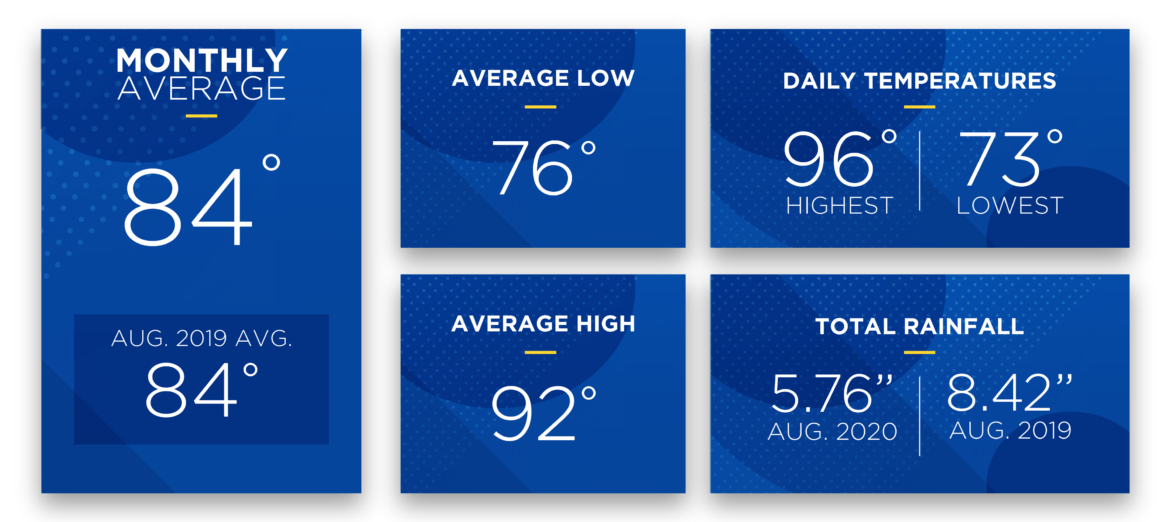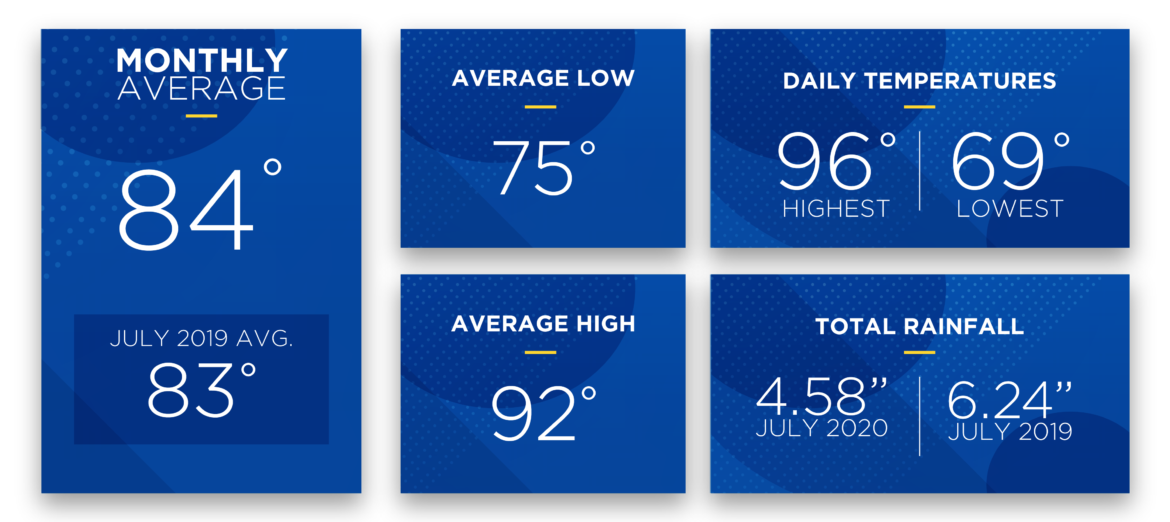Sunshine State Stats August 2020
August in Central Florida was hot! The average high temperature was a melting 92 degrees while the average low was a warm 76 degrees. The average temperature for the month was 84. The highest recorded temperature was 96 degrees and the lowest recorded temperature was 73 degrees.

August was hot and drier than average. The average rainfall amount in August in Central Florida is 6.2 inches. In August 2020, rainfall was substantially lower than average at only 5.76 inches. Rainfall in August 2019 was much higher than average at 8.42 inches.
Hurricane activity and Accumulated Cyclone Energy (ACE) has been higher this year per the National Oceanic and Atmospheric Administration (NOAA). Tropical Storm Josephine, Tropical Storm Kyle, Hurricane Laura, Hurricane Marco, Tropical Storm Omar and Hurricane Nana all formed in August 2020.
Is your hurricane supplies kit ready for the possibility of a tropical storm or hurricane? We recommend having a three-day supply of non-perishable food and water per person, along with a seven-day supply of medications. Other essentials include a weather radio, cash, flashlights, batteries, can opener, and a first-aid kit. You will find a list of hurricane essentials on our Storm Preparation page.
September forecast:
September is the peak of Atlantic hurricane season. Read our special Hurricane Handbook edition of SECO News to prepare before, during and after a storm. September weather is similar to August. Temperatures normally average 83.8 degrees with precipitation just over 6 inches.
To check historical usage, log into SmartHub to view past bills and consumption charts. If your usage is high, SECO offers several energy-efficiency tools to help you identify energy wasters. Take the Home Energy Assessment to receive a detailed email tailored to your home’s features and lifestyle. The energy-saving advice will provide low-cost ways to decrease your usage – and your electric bill.
To easily calculate how much energy your appliances, lighting, electronic devices, and other energy-using items in your home consume, use the Energy Estimator.
*source: www.nhc.noaa.gov





